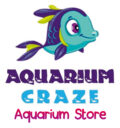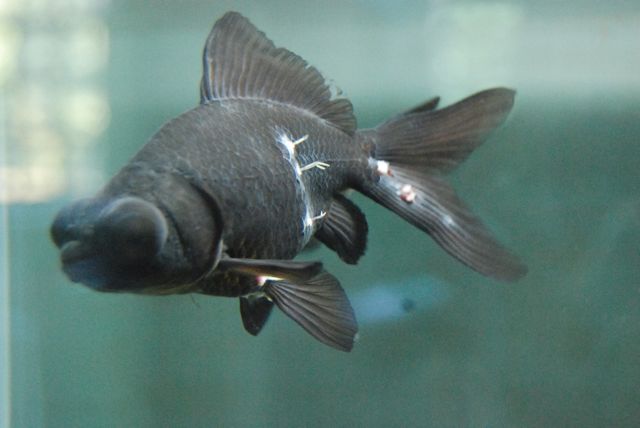Fish Anchor Worm Treatment: A Comprehensive Guide
Introduction
Fishkeeping is a rewarding hobby that requires diligence in maintaining aquatic health. One of the most common parasitic infections in freshwater fish is anchor worm infestation, caused by Lernaea species. These parasites can cause serious damage if left untreated, leading to secondary infections, stress, and even death in fish. Understanding the lifecycle, symptoms, and treatment methods of anchor worms is essential for effective management and prevention.
Understanding Anchor Worms
Anchor worms (Lernaea spp.) are crustacean parasites that attach themselves to fish, embedding their anterior ends into the skin while the rest of their bodies protrude. They are visible to the naked eye and resemble small threads hanging from the fish’s body. The lifecycle of anchor worms consists of multiple stages, including free-swimming larvae that attach to the host and undergo metamorphosis.
Lifecycle of Anchor Worms
- Egg Stage: Female anchor worms release eggs into the water, where they hatch into free-swimming larvae.
- Larval Stage: The larvae go through multiple molts before attaching to a fish host.
- Adult Stage: Once attached, the worm burrows into the fish’s skin and feeds on its tissues, leading to inflammation and sores.
- Reproduction: After maturation, females lay eggs, continuing the cycle.
Identifying Anchor Worm Infestation
Fish infected with anchor worms exhibit several signs, including:
- Visible thread-like parasites attached to the skin or fins
- Red sores and inflammation at the attachment sites
- Erratic swimming and rubbing against objects (flashing)
- Loss of appetite and lethargy
- Secondary infections due to open wounds
If an infestation is suspected, prompt treatment is necessary to prevent severe damage and potential fatalities.
Treatment Methods
1. Manual Removal
For individual fish with a limited number of anchor worms, manual removal can be an effective method.
Steps:
- Gently net the fish and place it on a damp cloth.
- Using sterilized tweezers, carefully pull out the anchor worm, ensuring the entire parasite is removed.
- Apply an antiseptic, such as iodine or hydrogen peroxide, to the wound to prevent secondary infection.
- Return the fish to a clean, well-aerated quarantine tank.
2. Chemical Treatments
For widespread infestations, chemical treatments are necessary to eliminate both adult worms and free-swimming larvae.
Common Chemicals Used:
- Potassium Permanganate: Used as a dip (10 mg/L for 30–60 minutes) to kill attached parasites.
- Dimilin (Diflubenzuron): An insect growth regulator that disrupts the lifecycle of anchor worms by preventing their maturation.
- Trichlorfon: An organophosphate that effectively kills adult parasites but requires careful dosing due to toxicity.
- Salt Treatment: Adding non-iodized aquarium salt (1–3 g/L) can help reduce parasite load and promote fish healing.
3. Medicated Baths
Fish can be given short-term medicated baths to eliminate parasites.
Steps:
- Prepare a bath using potassium permanganate or a commercial anti-parasitic solution.
- Place infected fish in the bath for the recommended duration (typically 30–60 minutes).
- Monitor the fish closely and return it to the main tank if signs of stress appear.
4. Quarantine and Tank Treatment
- Isolate infected fish in a separate quarantine tank to prevent further spread.
- Clean and disinfect the main tank by vacuuming the substrate and performing partial water changes.
- Remove free-swimming larvae by using UV sterilizers or fine-mesh filters.
Preventative Measures
1. Quarantine New Fish
Always quarantine new fish for at least 2–4 weeks before introducing them to the main tank. This helps identify potential infections and prevent the spread of parasites.
2. Maintain Water Quality
Poor water conditions can stress fish, making them more susceptible to infections. Regularly test water parameters and perform routine water changes to keep ammonia, nitrite, and nitrate levels in check.
3. Avoid Overcrowding
Overcrowded tanks increase stress and reduce water quality, creating a breeding ground for parasites. Provide adequate space and filtration to maintain a healthy environment.
4. Disinfect Equipment
Shared equipment, such as nets, siphons, and decorations, should be properly disinfected between uses to prevent cross-contamination.
5. Use Natural Predators
In outdoor ponds, introducing natural predators such as dragonfly larvae or certain fish species can help control anchor worm populations.
Monitoring and Follow-Up Care
After treatment, continue monitoring fish for signs of reinfection. Perform regular water changes and maintain optimal tank conditions. If needed, repeat chemical treatments following manufacturer guidelines.
Conclusion
Anchor worms can pose a significant threat to fish health, but with early detection and appropriate treatment, infestations can be managed effectively. By implementing preventive measures and maintaining proper tank hygiene, fishkeepers can minimize the risk of anchor worm outbreaks, ensuring a thriving aquatic environment.
- 10 Must-Have Aquarium Maintenance Tools You Can’t Live Without!
- Say Goodbye to Fish Lice Forever! The Ultimate Treatment Guide
- Anchor Worms Are Attacking Your Fish! Learn How to Eliminate Them FAST
- Miraculous Betta Fish Fin Rot Treatment – You Won’t Believe How Easy It Is!
- Is Your Fish’s Tail Falling Apart? Discover the Best Fin Rot Treatment That Works!
- Cotton Wool Disease in Fish: Causes, Symptoms & Effective Treatments
- White Spot Fish Treatment: Effective Methods to Protect Your Aquarium
- Effective Dropsy Fish Treatment You Need to Try – Save Your Fish Today!
- How to Set Up a Cichlid Aquarium: A Complete Guide

